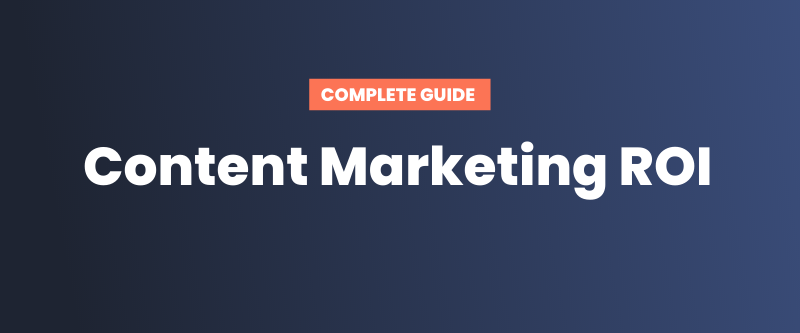You spend hours writing the most fascinating, well-researched blog post…
…only to have it read by your mom and a handful of other people.
Ouch! I know, the truth hurts, but this is the unfiltered truth: Fewer people are reading your blog posts than you may think.
With that being said, a lot more people are dissecting your headlines than you think. In fact, the data has spoken, and on average, only 20% of people surfing the web will click through to your article after reading the headline.
Which means that even the best headlines are losing 80% of their audience.
Table Of Contents:
- Tell Your Readers Exactly What Your Post Is About
- Construct Your Headlines With Sentence Case Capitalization
- Start Your Headlines With a Number to Rank Better in Google
- Forget About Even Numbers, Use Outperforming Odd Numbers Instead
- Personalize Your Blog Titles by Using “You” or “Your” to Address Your Reader
- Steal “Buzz” Words From the Best to Use in Your Headlines
- Make Your First Six Words Count
- Keep Your Titles Under 57 Characters to Avoid Google’s Cut-offs
- Insert Superlatives for Lots of Clicks and Insert Negative Superlatives for Even More
- Use the Only Question Worth Asking in Your Headlines: “How”
- Incorporate [Bracketed] Words for More Specificity and More Clicks
- 10x Your Headlines by Using the Most Effective Power Words
- Be Persuasive in Your Headlines, but Not Too Pushy
What’s the Difference Between a Title Tag and an H1, and Why Do They Matter in an SEO Headline?
Before we begin declining into the writing of SEO headlines that guarantee high search rankings, let’s talk about H1 and title tags.
H1 tags are top-level header HTML tags and inform search engines what to expect from the rest of the page’s content, while search engines use title tags to create the blue links shown in their results pages.
Sites frequently use the same content for the H1 and title tags on an article or blog post. However, keep in mind that they are two separate things that are controlled in two different places in the page’s HTML code.
Our goal is to create headlines that efficiently function as your post’s H1 and title tag. Consider them as headlines that will help you improve your search engine ranking and promote your website.
When you write SEO headlines and title tags, keep humans and search engines in mind as you want your H1 to contain a primary keyword that will help you rank. Title tags, meanwhile, help drive the target audience from the results page to your website.
Luckily, attracting more readers and boosting your blog posts’ ranking in search engine results pages (SERPs) can be done with these 13 blog post headline writing tricks…
13 Blog Post Headline Tricks for Crafting the Best SEO Headlines
[ps2id id=’1′ target=”/]
1. Tell Your Readers Exactly What Your Post Is About
Ultimately, why do people read anything? To get something of value from it.
It may sound simple, but for the most part, people are immediately looking for what they can get out of your content before deciding if they’ll read any further. Headline writing should be one of the main elements of your content marketing strategy.
That’s why you need to accurately tell your readers in as few words as possible (more on this to come in Tricks 7 and 8) what they’re going to get out of your post, and your best bet is to do that right up front with a concise, well-worded and compelling headline that paints a clear picture and meets the users’ search intent.
Use subheads to provide more context to your topic.
A study by Conductor demonstrated without a shadow of a doubt that click-through rates (CTRs) increased significantly the clearer the headlines became.
[ps2id id=’2′ target=”/]
2. Construct Your Headlines With Sentence Case Capitalization
On the more technical side of headline construction, studies have shown that the use of sentence case capitalization in headlines is preferred by a margin of 300% more than the alternatives.
If you’re not already familiar with the various capitalization styles, here are examples of the three most common types for your reference:
- Sentence Case – “13 Hacks to Boost Your Clicks”
- Lower Case – “13 hacks to boost your clicks”
- Capitals – “13 HACKS TO BOOST YOUR CLICKS”
By all means, test various capitalization styles – just know that sentence case is historically the most preferred by the average reader.
[ps2id id=’3′ target=”/]
3. Start Your Headlines With a Number to Rank Better in Google
We live in the age of lists, and for a good reason: many people want clear, concise posts that are organized by number. Not only does this technique make each point more focused, but it makes it easier for readers to scan through the entire post and digest the points they like.
Starting your headlines with numbers and using the list strategy is not just a psychological factor that will increase clickthrough and decrease your bounce rate times, it’s also something search engines’ algorithms will recognize and rank higher when people search for your topic.
Here are a couple examples of how your numbered blog posts could be structured…
“7 Top Strategies to Boost Your Clicks”
“25 Effective Headline Strategies to Boost Your Clicks”
[ps2id id=’4′ target=”/]
4. Forget About Even Numbers, Use Outperforming Odd Numbers Instead
Now that you’re using numbers in your headlines, don’t just use any ol’ number.
The Content Marketing Institute analyzed over 150,000 individual headlines and confirmed that headlines using odd numbers are, on average, clicked 20% more than the even numbered headlines.

Imagine simply restructuring…
“4 Tricks to Beat Writer’s Block”
to…
“5 Tricks to Beat Writer’s Block”
…and getting 20% more readers as a result!
With a series of small changes like this, your headlines will be high-performing eyeball-grabbers in no time. Just make sure you pay close attention to the next trick as well – it’s a must!
[ps2id id=’5′ target=”/]
5. Personalize Your Blog Titles by Using “You” or “Your” to Address Your Reader
Do you remember what people’s favorite word in the whole wide world is? Their name!
Since you probably don’t have all of your reader’s names, you’ll have to settle for personalizing your headlines by using “you” or “your”.
Here are a few samples to give you the gist of how you can implement this technique..
“21 Tips to Eliminate Your Writer’s Block”
“Your 5 Hacks to Beat Writer’s Block”
“11 Writer’s Block Killers Just for You”
After numbered list headlines, reader addressed headlines are the most effective tool in your arsenal. Make it all about your reader and you’re sure to pique their curiosity.
[ps2id id=’6′ target=”/]
6. Steal “Buzz” Words From the Best to Use in Your Headlines
BuzzFeed has cracked the code to a successful headline, and they’ve spent millions doing it. Taking that enormous investment into account, your best option may simply be to swipe some tactics from the best.
You can regularly monitor BuzzFeed — and other top publishers — for headlines that catch your eye. However, thanks to a fellow blogger, we’ve now got the most popular three-word phrases BuzzFeed uses in their headlines.
You’ll notice that a number of them incorporate some of the headline techniques we’ve already mentioned — as well as some that are yet to come.
Try infusing a few of these words and phrases into your headlines and testing how they perform.

[ps2id id=’7′ target=”/]
7. Make Your First Six Words Count
You may not always be able to fit your headlines into six words, but when you can, do it. More practically speaking, just make it a rule to say the most important points in your first six words. It’s good practice to include the target keyword in the beginning of your headline.
The age of fast-reading headline scanners we live in means that you need to make those first six words count, and a round-up of studies by CoSchedule has confirmed this fact.
There you have it: sometimes less truly is more. Just consider these sample SEO titles to see how much you can say in relatively few words…
“3 Secrets to Getting More Referrals”
“7 Writing Tricks to Boost Readers Fast“
“5 Words Your Readers Love Most”
[ps2id id=’8′ target=”/]
8. Keep Your Titles Under 57 Characters to Avoid Google’s Cut-offs
While you’re analyzing your headlines first six words, take a look at how many characters they have in total.
Moz studied thousands of titles on the first page of various Google results and found that post titles were frequently cut off between 42 to 68 characters.

That means your headlines should average around 57 characters — right in the middle of the safe zone for avoiding cut-offs in the search engine results page (SERP).
Some letters take up more space than others (“m” vs. “i”) so you can get super technical on this if you want, but really, just focus on concise titles that fall under that 57 character guideline and you’ll be well ahead of the competition.
[ps2id id=’9′ target=”/]
#9 Insert Superlatives for Lots of Clicks and Insert Negative Superlatives for Even More
Placing a strong adjective at the beginning of your title adds extra emphasis, and studies have demonstrated that 51% of readers surveyed are more likely to click a headline when there’s a superlative in it.
More isn’t always better, though, so keep it to only one strong superlative per headline.
Even better than using a boring old positive superlative, use a negative one for extra clicks. A study by Outbrain found that using negative superlatives is actually significantly more effective than using positive ones in your headlines.

Consider “9 Best Tricks to Increase Your Readers” vs. “9 Sinister Mistakes That Are Costing You Readers”.
[ps2id id=’10’ target=”/]
10. Use the Only Question Worth Asking in Your Headlines: “How”
BuzzFeed has determined that questions in headlines often fail, so as a general rule, avoid using them. Remember, unless you ask the perfect question and know your audience exceedingly well, you might not get the answer you want from your reader.
If you are going to use a question-style headline, BuzzFeed determined that the most effective of the bunch are “how” questions such as…
“How to 2x Clicks on Your Headlines”
“How We Increased Our Readers by 271% With One Email”
[ps2id id=’11’ target=”/]
11. Incorporate [Bracketed] Words for More Specificity and More Clicks
Bracketed words serve as a short, clear identifier for specific types of content.
Marketing firm V3b recently found that the clickthrough rate of their headlines increased by 38% when they used bracketed qualifiers.

Here are a couple examples of instances where you could use brackets in your headlines…
“How to Double Your Readers in 30 Days [Tutorial]”
“3 Welcome Emails that Make Conversions Skyrocket [Templates]”
Just make sure that there’s a valid point to bracketing the word and that it will, in fact, mean something to your audience. Otherwise, it may just be confusing.
Speaking of using the right words…
[ps2id id=’12’ target=”/]
12. 10x Your Headlines by Using the Most Effective Power Words
Headlines that feature more emotional power words are 10 times as likely to be shared, so you can imagine the effect it has on CTRs as well.
You can take advantage of this fact in your headlines by utilizing some of the most effective power words of all time, and what better place to start than with star copywriter Karl Stepp’s list of 180 power words.
You don’t have to be a copywriter per se to know that stirring up emotion in your readers is a surefire way to increase your reach, and some of the most tried-and-true power words like “free,” “sale,” “new,” and “special,” still do the trick nicely when you’re trying to capture a reader’s attention.

[ps2id id=’13’ target=”/]
13. Be Persuasive in Your Headlines, but Not Too Pushy
We’ve all heard the story of the salesman that sticks his foot in the door to prevent it from being closed, but that’s not what you want to do with your readers.
There’s a fine line between being persuasive and being pushy. See if you can tell which is which in these two headlines:
“19 Headlines You Must Use in Your Blog”
“11 Highly Effective Headlines You Can Swipe for Your Blog”
If you guessed that the first was pushy and the second was persuasive, you’re correct. Now, toe that line carefully in your own headlines and work towards mastering the art of persuasion.
You’re Nearly There, You Just Need These Final Pointers to Really Knock It Out of the Park…
Congrats, you made it to the end of the list and are officially 1,052,0123% more effective at writing headlines! Ok, maybe that number was made-up, but you’ve no doubt got a few tricks up your sleeve that can help you to write more effective headlines.
Just remember, writing compelling headlines is an art, and it takes time to perfect. Practice writing 20+ headlines for each post before trimming them down to the top 10, top five, and finally, the one golden headline. Even better, have another experienced writer (or even your family and friends) pick their favorites. Getting more eyeballs and feedback on your work means that your headlines have a better chance of doing their job.
All of these efforts can help come up with new headline writing formulas.
Most importantly, keep on testing, testing, and testing some more. There are no firm rules when it comes to headlines, just best practices that have been proven by extensive testing.
Pick out a few of these tricks to test with your next headlines and evaluate the effect it has on your CTRs.
Good luck!





